Ah, the rear differential, or rear diff as we usually call it. It’s kinda-sorta, to some, a little mysterious magical unicorn that is often misunderstood and not given much attention. The intent of this article isn’t to try to get too deep into the magic fairy dust innerworkings of a rear differential, but rather, to show you just how easy and painless it is to service yours.

Lucky for us owners, Dodge has given us a wonderful drivetrain in our modern-day muscle cars. Right around 2015, Dodge switched from using the old made-over Mercedes Nag1 5-speed automatic trans and Getrag rear differentials and put in the beautiful ZF 8-speed transmission and matching ZF rear differential. I am a huge fan. Especially on the SRT® Hellcat versions. How many factory transmissions and rear ends are out there taking over 1,000 horsepower straight to the guts and standing strong? I’ll wait while you think about it. Most rear-wheel-drive (RWD) performance cars these days feature a limited slip differential. The ZF rear ends in Dodge Brand vehicles are strong as an ox and require very little upkeep over their lifespan. But it might be smart to stay on top of your maintenance and tune-ups to keep things performing their best for the entirety of your vehicle’s existence.
You may notice your SRT Hellcat owner’s manual may not say much about scheduled maintenance. All you HEMI® engine-powered vehicle owners out here, I know EXACTLY how bad you beat the heck out of your cars. Every. Single. Day. And at the track, and in empty parking lots, and anywhere there is pavement. It wouldn’t hurt to make sure you have good fluids in your rear diff just like you would engine oil. Changing the fluid is incredibly easy and you really don’t need to have an engineering understanding of the pixie dust inside the rear end.
It’s pretty simple: Your engine turns your transmission, which turns your driveshaft, which turns the rear end, which turns the axles, which turn the rear wheels. It doesn’t take much to notice that your driveshaft runs from the front to the back of your car, and your axles run side to side. Something must take that rotational power from running longitudinal down the driveshaft and change direction of it so it can turn the rear wheels. There are many types of rear differentials out there that have special features or do things slightly different or have a different method of operation. At the end of the day, however, they all convert the rotation of power from the driveshaft into a perpendicular rotation to turn the rear wheels. As I mentioned, most of you readers are rocking a HEMI engine or at least a RWD Dodge hot rod. To keep it short, I am going to generalize a little here. On “our” cars, there are essential two different types of rear differentials – limited slip and “open”.
Open: Pretty simple to grasp and found often in lower horsepower applications. The driveshaft mates to the rear differential, rotation is changed and fed through just one axle/one wheel. The other axle/wheel is sort of just there, cruising along not really doing much of anything, almost like a training wheel. This is where you get your “one wheel peel”, or the burnout that leaves only one tire track. Inexpensive, functional, but not the best for performance.
Limited slip: The driveshaft mates to the rear differential and the direction of the rotation is changed to power both rear axles/wheels equally. This is the ideal way to obtain the best traction, best performance, and capture all those ponies running out of your engine and stick them to the ground. There is one inherent problem with both wheels being turned together – you cannot have any change in speed between the left and right wheel. “Well, dumb dumb, who would ever want that anyways?” Funny you should ask. When you go around a turn, your outer wheel actually travels a longer distance than the inner wheel.
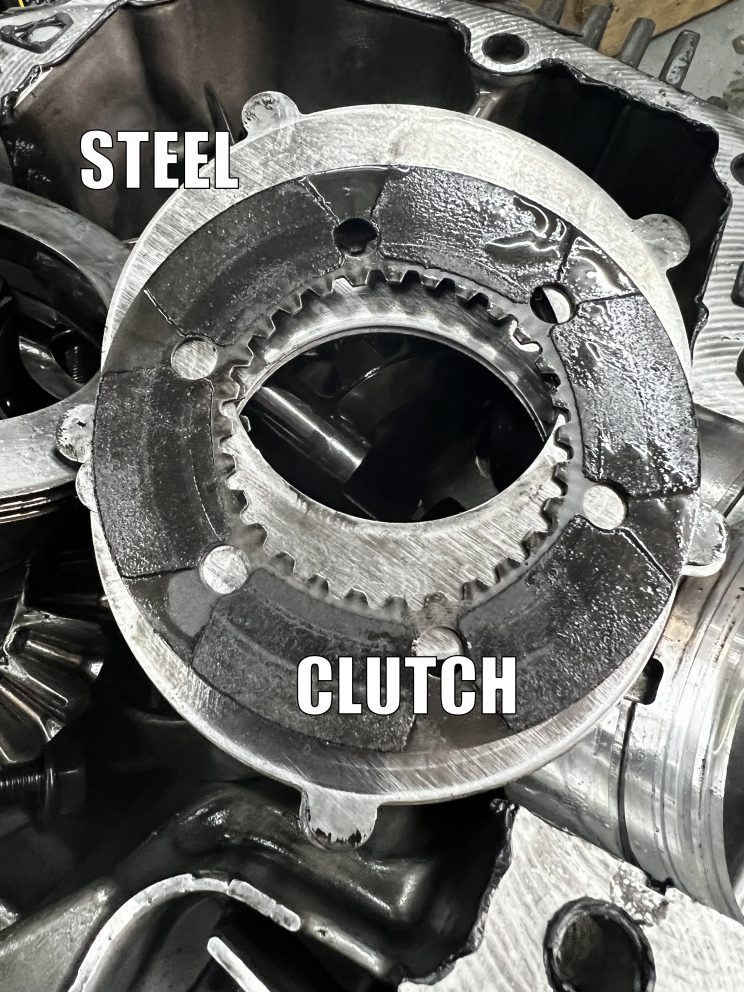
In order for that to happen, the wheel has to rotate at different RPMs from each other in order for the vehicles traveling speed (MPH) to stay the same. Limited slip-style rear ends allow the left and right wheels to “slip” in certain conditions to allow a difference (differential) in speed between the two. You also have the fancy gadgets like traction control, ABS brake systems and the tech that monitors speed at each wheel and electronically bosses your car’s physics around to make sure you keep it on the road. In general, the method that a limited slip functions is via clutches for each axle inside the rear end.
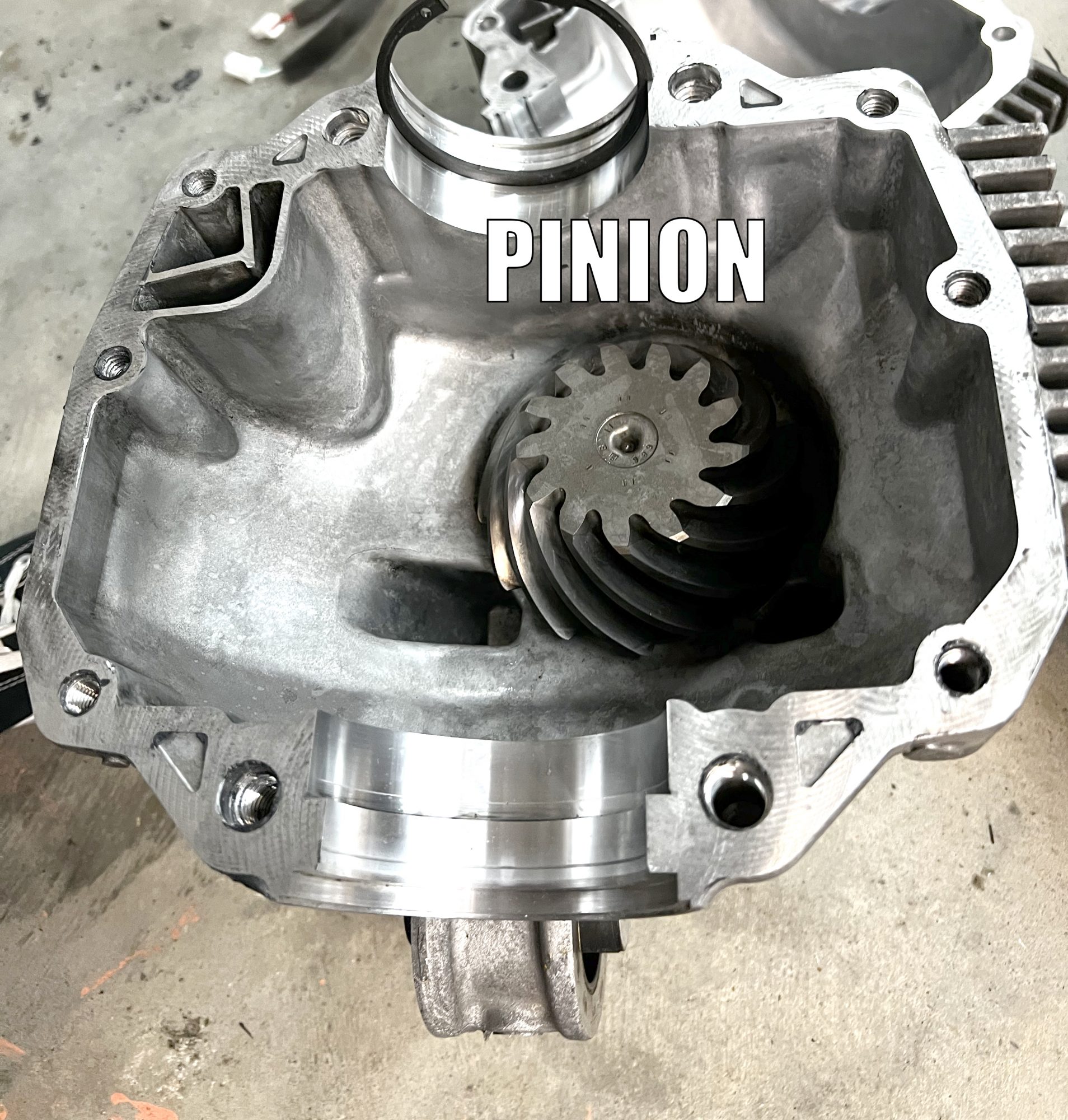
There is the large pinion gear on the front that is driven by the driveshaft. It spins in the same rotation as the driveshaft.
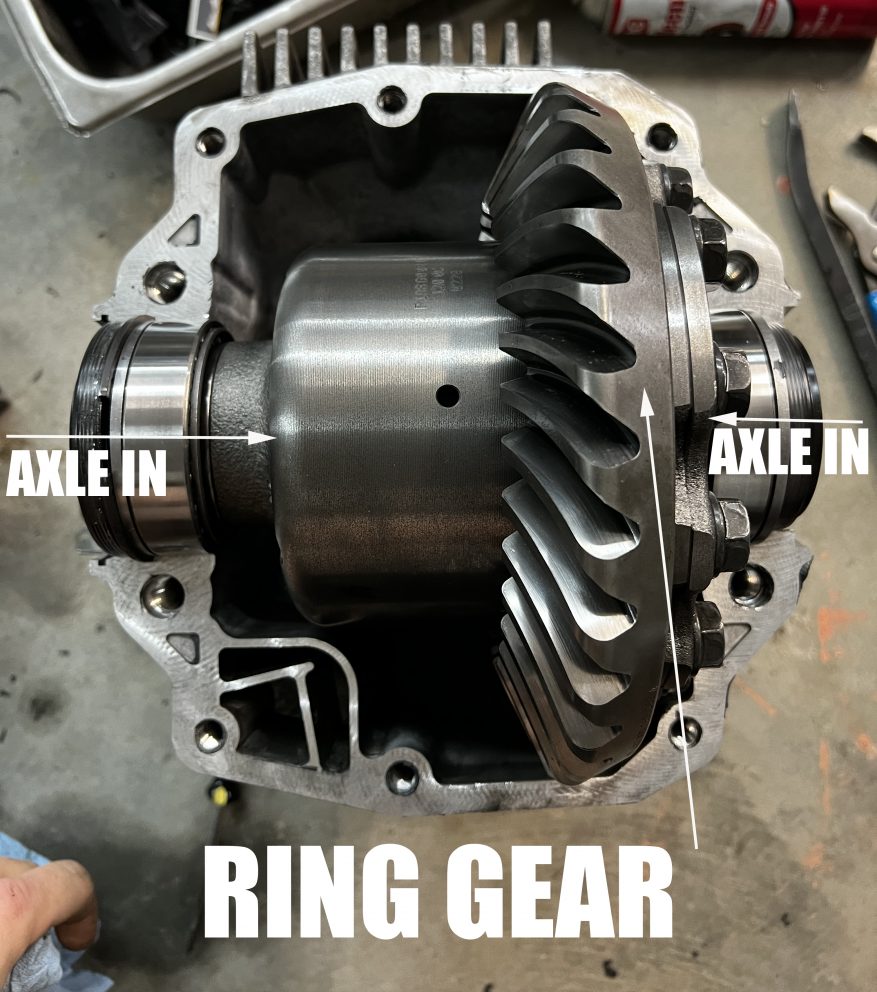
The teeth of the pinion interlock with a ring gear, which is attached to the drum, or housing, which has some more cool stuff inside. The ring gear runs 90° to the pinion gear and this is where the rotation is changed. Inside the housing is a variety of parts that are connected to each axle and, in part, to each other.
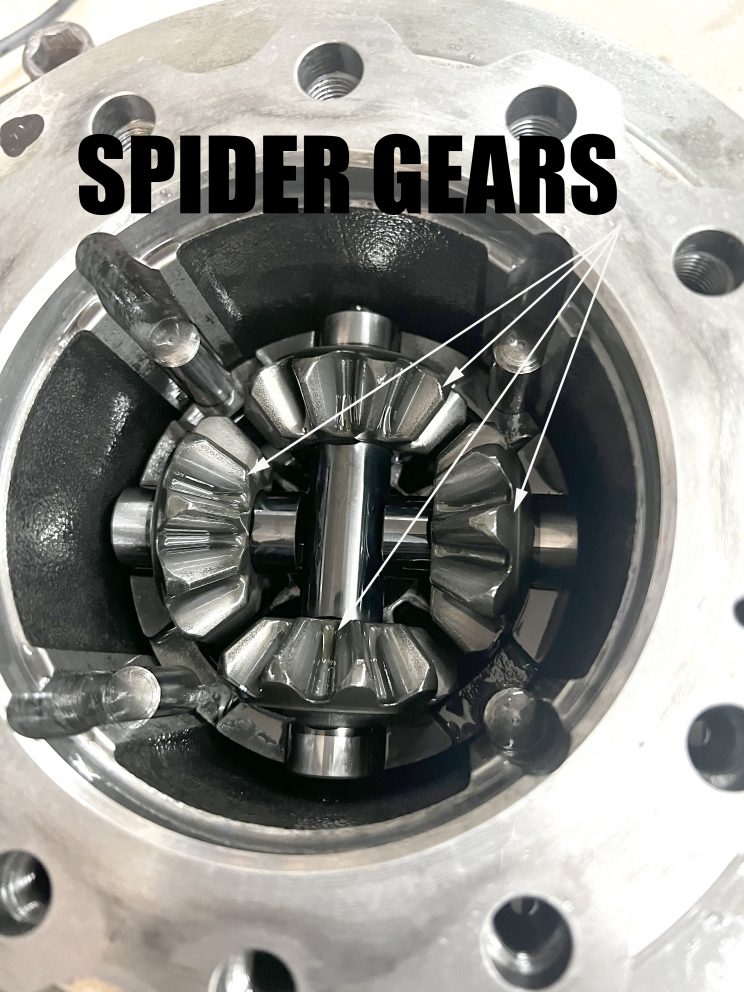
There are some spider gears, or satellite gears, that rotate around the axle gear, or planetary gear that each axle is splined into. They are positioned in the center of the magical housing.
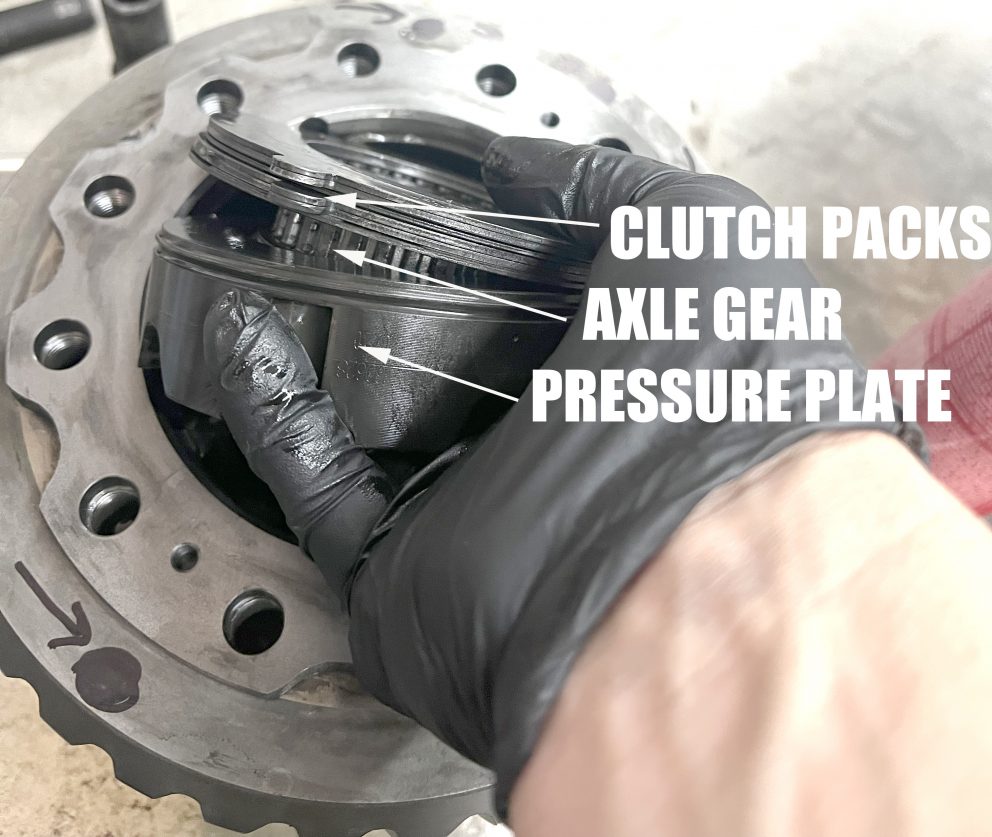
As you move out from the center, you have a pressure plate, which is more like a cup, surrounding the spider gears. The spider gears and pressure plates are mechanically locked in place (or designed) so that they rotate with the housing/ring gear.
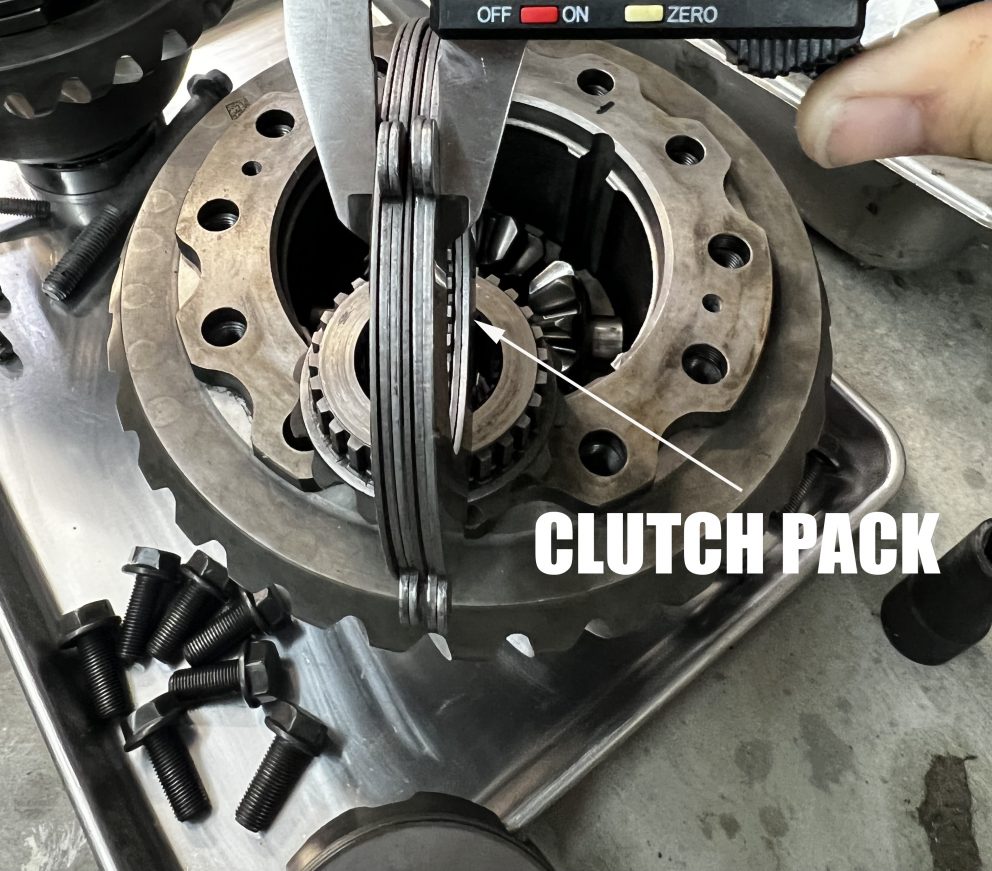
On the outside of the pressure plates, there are a combination of clutches and steel plates (clutch packs). The clutch packs are small discs splined to the axle with a clutch material on them very similar to a transmission clutch. The physics and design of the spider gears, pressure plates and clutch packs is what allows the right and left axles to break free from turning at the same speed.
There are a variety of other items in the rear differential, including shims, spacers, bearings, washers, pins and, of course, fairy dust. Proper lubrication with any metal-to-metal moving pieces, such as gears, is critical. Naturally, there is a certain amount of wear over time and abuse on the gears and bearings. Even more wear can happen on the clutch packs as they are a consumable, wear-item, just like brake pads or transmission clutches.
One common occurrence with performance rear differentials that many owners make mention of is that they can tend to be noisy or loud. This is usually in part due to the way gears inside are shaped and cut. It can also be a result of the fluid starting to break down from excessive mileage or heat. If you drive your hot rod like it’s meant to be driven, I find it wise to change the rear differential fluid on occasion. We are not talking every 3,000 miles, or even 30,000 miles. Only you know how you drive your car. If you casually drive grandma to bingo once a week, you likely won’t need to change it ever. Use your best judgement. And if you start to notice any change in sound or performance, it may be time to give that bad boy a fresh dose of rear diff fluid. The typical description most owners give the sound they hear out of their rear end is “whiny, moaning, grinding.” Again, due to the design, some amount of “noise” is common, normal and expected with this type of rear end, so don’t freak yourself out if you do start to notice a very slight whine.
You don’t need much in the way of tools or equipment to change the fluid and it only takes a few minutes. I can’t stress enough – use the OEM Dodge fluids. Unless you are just an expert on this type of stuff, go with what the people that made the dang thing say to use! Consult your owner’s manual or dealership to source the fluid specific to your car.
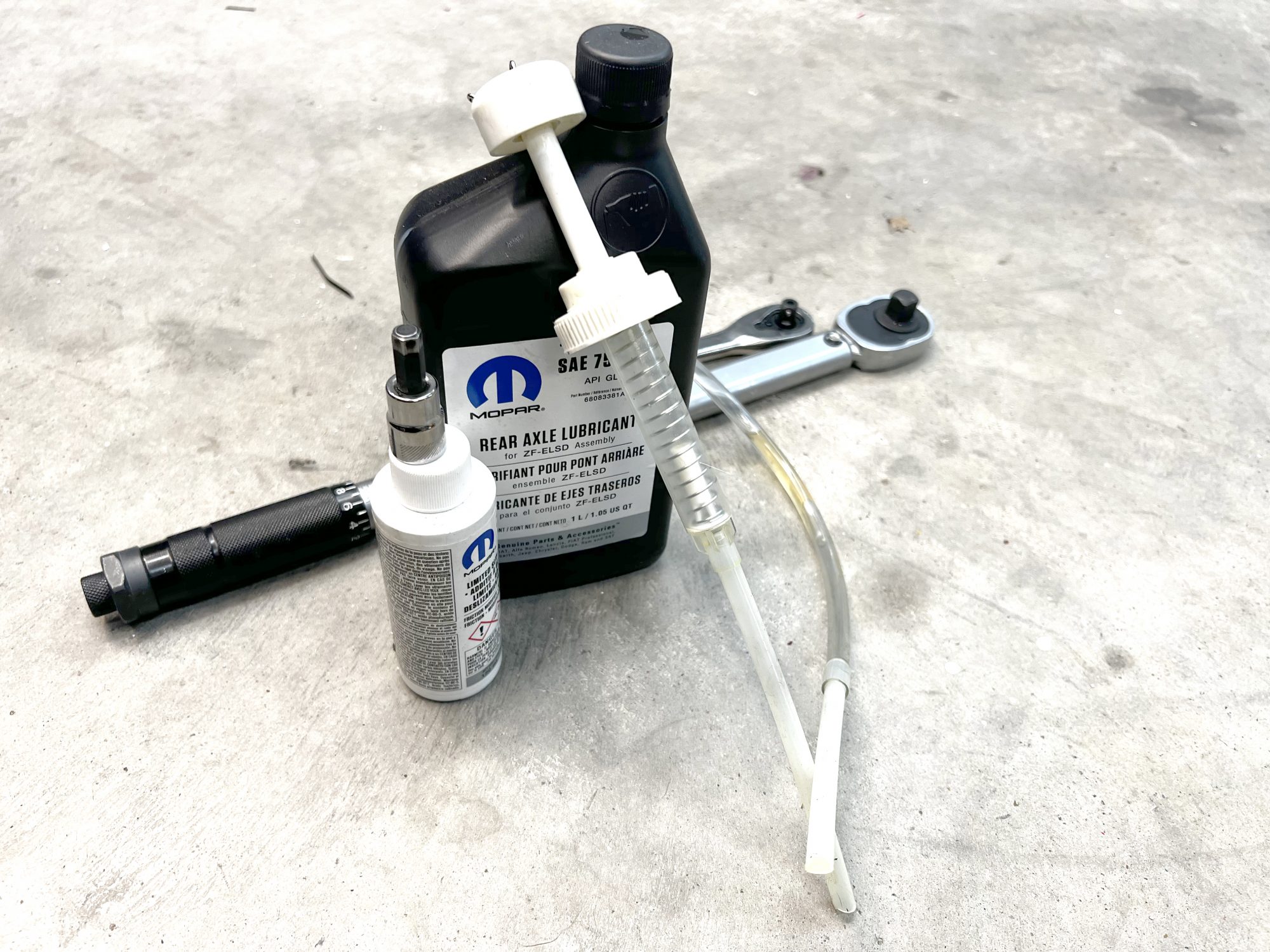
What you need:
- Mopar® Rear Differential Fluid x 2 quarts (requires a little over 1 quart)
- Mopar Friction Modifier
- Oil pump (available online and at most local auto parts stores)
- Hex bit #8
- Ratchet
- Torque wrench that can go down to 26 ft.-lbs.
- Container to drain fluid into
It’s not necessary to jack the car up or put it on a lift. I have done this many times on the floor, but if crawling around on the floor is not your thing, by all means, feel free to put the car on a lift or jack stands. We are going to be working on the back side of the rear end, which is easily accessible by sliding under the trunk with very little in the way. Keep the vehicle level and refer to your owner’s manual for proper jacking procedures for your car.
Place your empty container under the rear differential, on the back side. Notice a variety of bolts. Toward the driver side, you will see two Hex-style plugs, one closer to the bottom and one a few inches higher.
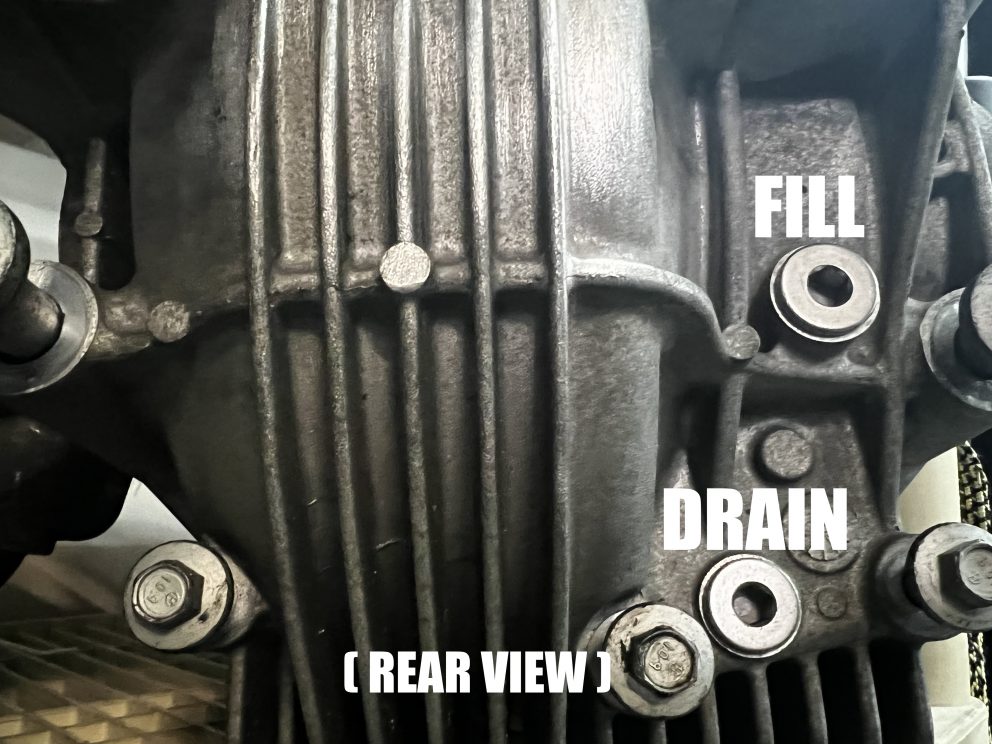
Using a ratchet and a #8 Hex driver, remove the lower (drain plug) and drain fluid into container. Go eat a sandwich while you wait for it to all trickle out. Clean the drain plug and drain area up of any dirt, debris and oil. Install drain plug back into the housing and torque to 26 ft.-lbs.
Next, remove the upper fill plugs. Attach your pump to the oil container. Place the fill tube of the pump into the fill port on the rear diff and start pumping away.
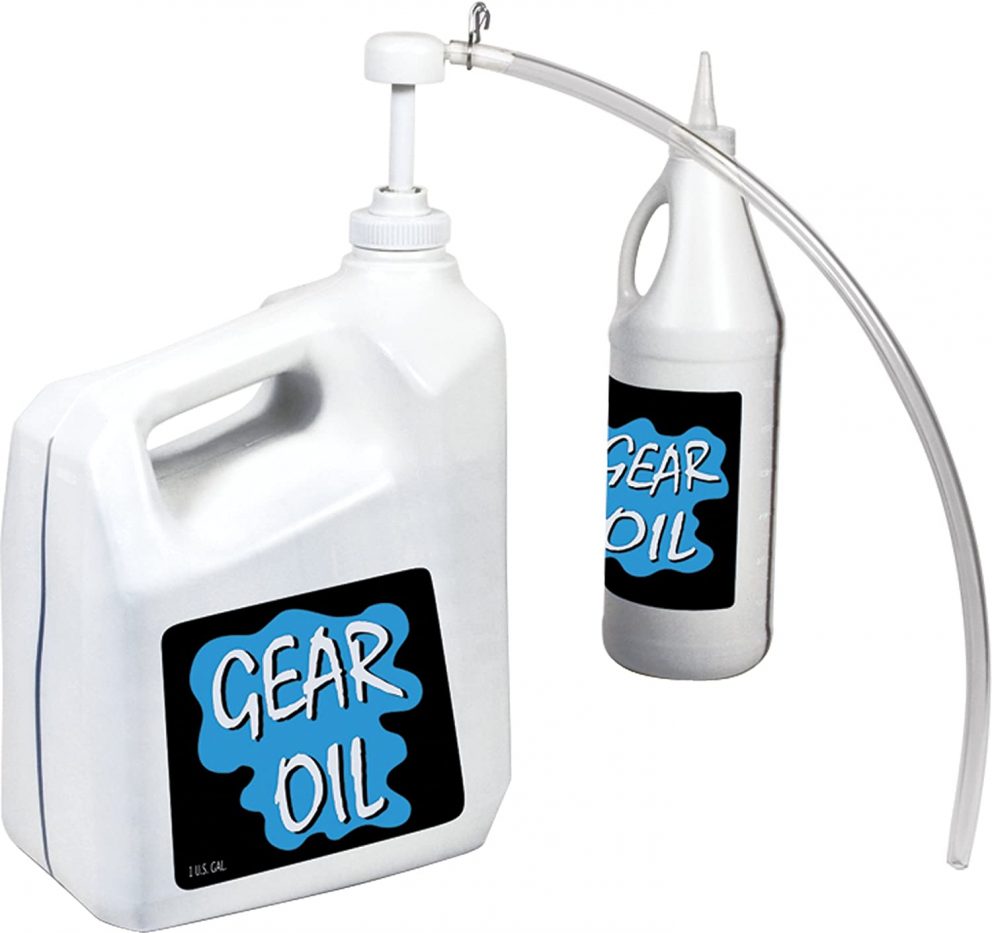
I usually throw in roughly a quarter of the quart and add about a quarter of the bottle of the Mopar Friction Modifier into my oil container and shake it up a little. The friction modifier is used largely in part to aid in excessive noise of the limited slip rear end. Resume pumping your fairy dust into the rear end. Depending on how much oil you previously had in it originally and how much drained out, the required amount will vary. You need to keep adding fluid until it fills high enough that it starts spilling out of the fill port. Once you get fluid coming back out, you can stop. Clean the area and plug, install fill plug and torque to 26 ft.-lbs. How easy was that??
Now, go easy on your car for a few trips. Avoid hard acceleration and aggressive turning. One trick commonly used is to go drive SLOWLY in figure-8s in an open parking lot. This will help work the new clean fluid in through the rear end gears and clutches. New fluids can’t really get to the clutches unless they disengage slightly. This is achieved with the figure-8s. Check the ground under your car to ensure there are no leaks. If you notice your rear end is sounding different, is louder, or has a whine still, try adding a little bit more friction modifier. In just about 30 minutes, you now have fresh clean fluids keeping that magical unicorn happy and running top notch. Get busy!
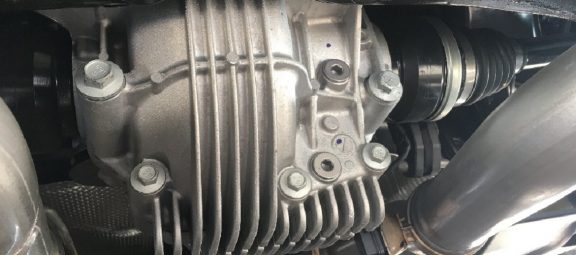
0 Comments